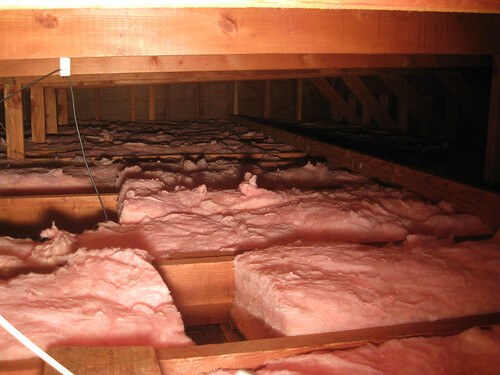Whether you’re building a new home or replacing your current HVAC system, an accurate load calculation is essential for deciding exactly how much heating and cooling capacity your building needs. That way, you can avoid choosing a system that’s too big or small.
Why Load Calculation Is Important
A load calculation must take into consideration the physical and thermal characteristics of the home, taking the best advantage of some of those characteristics and compensating for others. The process requires a careful evaluation of the home, with multiple measurements, and an on-site inspection to confirm the structure’s status.
As part of a load calculation, the evaluator will look at features such as local weather and climate, the number of windows, the directional orientation of the home, the amount of insulation, and the energy efficiency features of the home. Once this information is gathered according to the techniques in Manual J, the data is entered into a computer program that does the actual calculations. When the evaluator has the final results in hand, it is relatively easy to find and recommend an HVAC system that will satisfy the home’s heating or cooling load.
The Factors We Consider
To provide accurate load calculations, Energy Diagnostics, Inc. uses a variety of variables, such as:
Cubic Footage
The cubic footage in conditioned areas is the height of the ceilings multiplied by the square footage. It doesn’t include places like attics or basements that aren’t heated or cooled.
R-Value
The R-value or thermal resistance value is a number between 1 and 60, and it tells us how well a surface resists the flow of heat. Homes with higher R-values have more effective insulation. To determine your home’s R-value, a professional from Energy Diagnostics, Inc. will examine your insulation.
The R-value depends on the type of insulation and how it’s installed. Polyurethane foam usually has the highest R-value, and fiberglass is effective as well. We’ll check for any damage, missing insulation, condensation, mold, or other problems and let you know how you can increase your home’s R-value. If you choose to add or replace some insulation, we can help you decide on the material that’s best for you and your family members or employees.
Air Leakage
Finding every flaw in your insulation through only a visual inspection can be difficult. Fortunately, Energy Diagnostics, Inc. can conduct a blower door test to determine how airtight your home or business is and find the sources of any leaks. During a blower door test, we mount a special fan to one of your outer doors and then close all other exterior doors and windows.
The fan blows air outside the house, and the difference in pressure pulls outdoor air inward through any leaks. We use a digital air pressure gauge to measure the pressure difference and a smoke pencil to find the sources of leaks. Preparing for a test usually takes about one and a half hours, and the test itself takes about 20 minutes. The time varies depending on the size of your home.
Since you’ll need to turn off your HVAC system, it’s a good idea to grab a quick snack outside your home or go for a walk while we conduct your test. After we finish, you’ll get a detailed report with your house’s air changes per hour (ACH). This is how often the air in your home would be completely replaced if the blower door fan ran for an hour. Five is a good result for older homes, and new houses should have an ACH of 4 or less.
The report will also contain your cubic feet per minute (CFM), the rate that air moved through the fan during the test. Relatively airtight homes and businesses have a CFM of less than 1,250.
Your Home’s Surroundings
The direction that your home faces, the number and size of the windows, and the amount of shade on the property can impact your HVAC load. The local climate is an important factor as well. We consider the average high and low temperatures and the average humidity here in Valparaiso, Indiana.
How People Use Different Rooms
If you have a finished basement or attic that you don’t use much, we can provide a separate load calculation for that area. That way, you can choose an HVAC system with a lower capacity for the main part of your home and a smaller, separate system for the rest. You may need to pay more initially, but you can save money over time through lower electricity bills and also increase the value of your home. Controlling temperatures separately in each part of the building also lets people with different preferences stay comfortable.
Energy Diagnostics, Inc. also considers the number of people who live in your home, how often you use the lights in each room, and how many appliances you use regularly. Devices like refrigerators and computers generate heat, lowering your heating needs in winter and raising your air conditioning requirements in summer.
How Load Calculations Work
Finding and installing the proper equipment requires a thorough knowledge of available options and a careful consideration of the characteristics of the home where the equipment will be placed. For HVAC professionals, there are three important technical reference works available to make the process easier and ensure a successful installation that meets the homeowner’s needs. These three major reference manuals provide critical technical information that HVAC professionals use in choosing HVAC equipment for a residential application. They are published by the Air Conditioning Contractors of America (ACCA), one of the HVAC industry’s most respected and authoritative trade groups. Manuals J, D, and S, and the information they contain give HVAC professionals guidance on best practices, practical procedures, and technical specifications that govern residential heating and cooling systems.
Image via Flickr by moppet65535
Manual J is much more accurate than other methods, especially if you repaired or upgraded your insulation or added additional rooms since moving into your home. We even assign BTU values to your electronics and lighting. We also use Manual D to determine the best size for your ductwork and design an efficient system. Manual S is for double-checking the results of Manual J, and we employ Manual N to help complete load calculations for commercial buildings.
At Energy Diagnostics, Inc., we can help you save energy, extend the life of your HVAC system, and improve your home or business’ value. In addition to load calculations, we offer Home Energy Rating System (HERS) testing to evaluate your overall energy use and improve efficiency.

